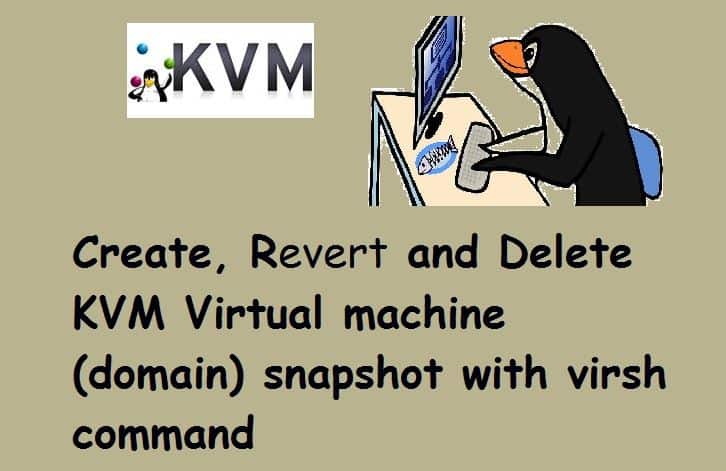While working on the virtualization platform system administrators usually take the snapshot of virtual machine before doing any major activity like deploying the latest patch and code.
Virtual machine snapshot is a copy of virtual machine’s disk at the specific point of time. In other words we can say snapshot keeps or preserve the state and data of a virtual machine at given point of time.
Where we can use VM snapshots ..?
If you are working on KVM based hypervisors we can take virtual machines or domain snapshot using the virsh command. Snapshot becomes very helpful in a situation where you have installed or apply the latest patches on the VM but due to some reasons, application hosted in the VMs becomes unstable and application team wants to revert all the changes or patches. If you had taken the snapshot of the VM before applying patches then we can restore or revert the VM to its previous state using snapshot.
Note: We can only take the snapshot of the VMs whose disk format is Qcow2 and raw disk format is not supported by kvm virsh command, Use below command to convert the raw disk format to qcow2
# qemu-img convert -f raw -O qcow2 image-name.img image-name.qcow2
Create KVM Virtual Machine (domain) Snapshot
I am assuming KVM hypervisor is already configured on CentOS 7 / RHEL 7 box and VMs are running on it. We can list the all the VMs on hypervisor using below virsh command,
[root@kvm-hypervisor ~]# virsh list --all Id Name State ---------------------------------------------------- 94 centos7.0 running 101 overcloud-controller running 102 overcloud-compute2 running 103 overcloud-compute1 running 114 webserver running 115 Test-MTN running [root@kvm-hypervisor ~]#
Let’s suppose we want to create the snapshot of ‘webserver‘ VM, run the below command,
Syntax :
# virsh snapshot-create-as –domain {vm_name} –name {snapshot_name} –description “enter description here”
[root@kvm-hypervisor ~]# virsh snapshot-create-as --domain webserver --name webserver_snap --description "snap before patch on 4Feb2018" Domain snapshot webserver_snap created [root@kvm-hypervisor ~]#
Once the snapshot is created then we can list snapshots related to the VM using below command,
[root@kvm-hypervisor ~]# virsh snapshot-list webserver Name Creation Time State ------------------------------------------------------------ webserver_snap 2018-02-04 15:05:05 +0530 running [root@kvm-hypervisor ~]#
To list the detailed info of VM’s snapshot, run the beneath virsh command,
[root@kvm-hypervisor ~]# virsh snapshot-info --domain webserver --snapshotname webserver_snap Name: webserver_snap Domain: webserver Current: yes State: running Location: internal Parent: - Children: 0 Descendants: 0 Metadata: yes [root@kvm-hypervisor ~]#
We can view the size of snapshot using below qemu-img command,
[root@kvm-hypervisor ~]# qemu-img info /var/lib/libvirt/images/snaptestvm.img
Revert / Restore KVM virtual Machine to Snapshot
Let’s assume we want to revert or restore webserver VM to the snapshot that we have created in above step. Use below virsh command to restore Webserver VM to its snapshot “webserver_snap”
Syntax :
# virsh snapshot-revert {vm_name} {snapshot_name}
[root@kvm-hypervisor ~]# virsh snapshot-revert webserver webserver_snap [root@kvm-hypervisor ~]#
Delete KVM virtual Machine Snapshots
To delete KVM virtual machine snapshots, first get the VM’s snapshot details using “virsh snapshot-list” command and then use “virsh snapshot-delete” command to delete the snapshot. Example is shown below:
[root@kvm-hypervisor ~]# virsh snapshot-list --domain webserver Name Creation Time State ------------------------------------------------------------ webserver_snap 2018-02-04 15:05:05 +0530 running [root@kvm-hypervisor ~]#
[root@kvm-hypervisor ~]# virsh snapshot-delete --domain webserver --snapshotname webserver_snap Domain snapshot webserver_snap deleted [root@kvm-hypervisor ~]#
That’s all from this article, I hope you guys get an idea on how to manage KVM virtual machine snapshots using virsh command. Please do share your feedback and don’t hesitate to share it among your technical friends 🙂

